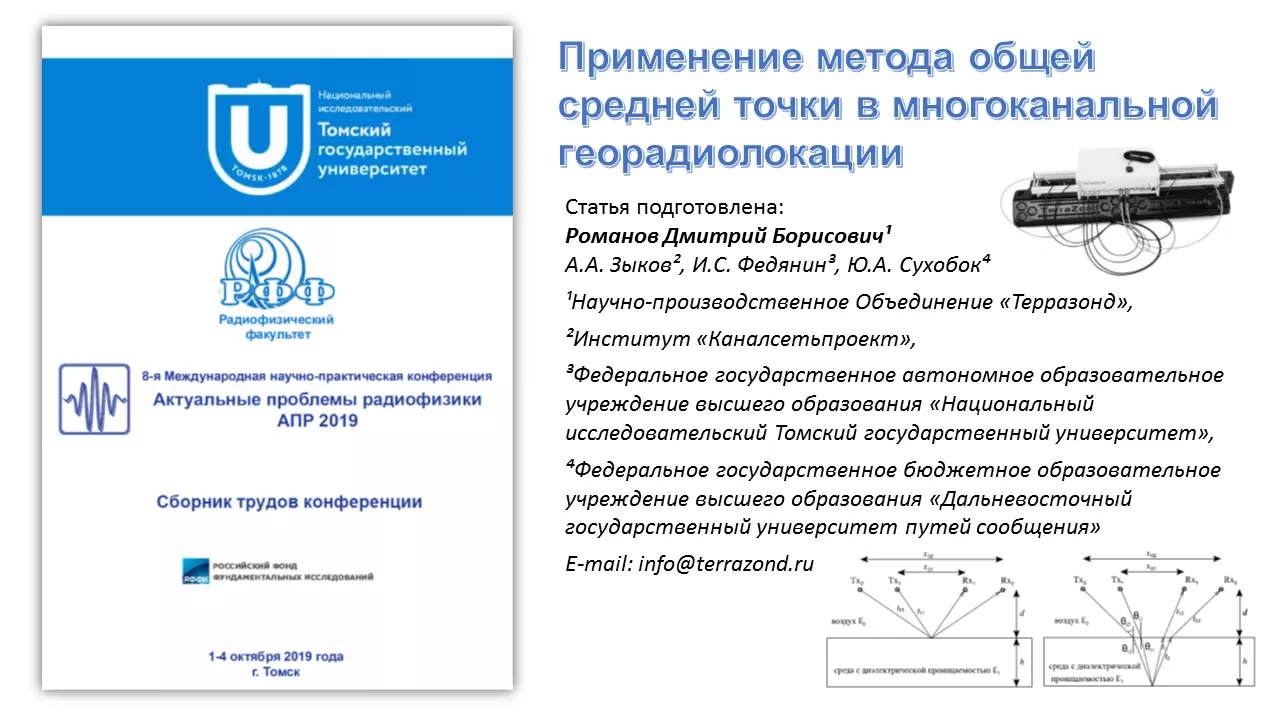GeoReader is featured in "Actual Problems of Radiophysics (APR 2019)"
Romanov D.B. (Head of NPO Terrazond) notes the use of the GeoReader Software package in the article "Application of the common midpoint method in multichannel GPR"

Excerpt from the article (translation from TIM LLC):
"Information about the thickness of the layers of the road structure is extremely important for studying the condition of the operated roads and assessing the compliance of the construction of new ones. Until recently, the control of the thickness of the layers of the road structure could be carried out by the destructive drilling method or during the executive geodetic survey. Since July 2019, GOST R 58349-2019 “Public automobile roads. Travel clothing. Methods for measuring the thickness of pavement layers ", according to which the method of applying the ground penetrating radar method in combination with a priori drilling was approved to determine the thickness of the layers of the road structure. However, asphalt concrete is characterized by segregation processes, which lead to the heterogeneity of their properties. It is obvious that the average values of the dielectric constant of the layers of the road structure can lead to errors in determining the thickness of the layers if the volume of calibration drilling is insufficient.."
more details can be found in the Proceedings of the 8th International Scientific and Practical Conference "Actual Problems of Radiophysics" (APR 2019)
"..The processing of radarograms in the GeoReader Software (TIM LLC) was carried out in two stages - interpolation of the control sections of the radarogram and the identification of a common midpoint at the lower boundary of the asphalt concrete.."
"Based on the results of the work done, the GPR-CMP algorithm is described, which makes it possible to determine the thickness and dielectric constant of the road surface with sufficient accuracy. The calculation results show a high correlation of solutions at one measuring point for different switching options of antenna pairs of the CMP mode. One of the important tasks in future works is the need to identify fundamental limitations on the use of the algorithm, in particular, to determine the minimum and maximum layer thickness, as well as the height of the antenna array above the scanned surface, at which the algorithm can be used. Further research is aimed at developing the algorithm for scanning materials with different dielectric constant and thickness, as well as developing guidelines for using the algorithm"


